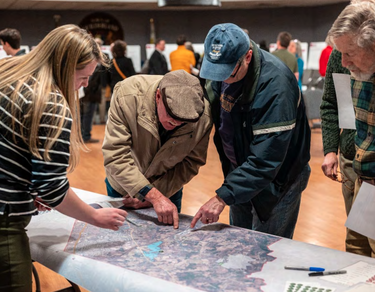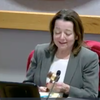Planning board weighs in on update of comprehensive plan
GUILDERLAND — The day after the town board scheduled its first public hearing for Feb. 4 on the recommendations to update Guilderland’s comprehensive plan, the planning board was formally presented with the draft.
The town’s planner, Kenneth Kovalchik, told the board that a committee of nine residents, appointed by the town board, had started meeting with a consultant in November 2022. The committee met 15 times as well as holding public workshops and visioning sessions, ultimately adopting a draft on Oct. 29.
On Nov. 19, the town board declared itself the lead agency and directed the planning department “to conduct a coordinated review," said Kovalchik.
Kovalchik suggested to the planning board at its Jan. 22 meeting that on Feb. 26, its next meeting, members could have “a more formal discussion” with their views combined "into a formal document to be referred back to the town board as part of their adoption process.”
In a 20-minute discussion dominated by the planning board chairman, Stephen Feeney, board members gave free-range responses to the 198-page draft document.
Feeney recommended “a compilation of comments” as opposed to “trying to put together some formal recommendation.”
He suggested members make marginal notes on a digital version of the draft to share with one another although one member said he preferred having a printed copy.
Feeney said he had so far spent about four hours reading the draft, getting through just two sections.
Most of his responses, he said “are food for thought sort of comments,” as opposed to “strict edits.”
He said he had questions for the committee like, “Did they actually look at our home-occupation code?”
He also recommended, “Don’t make a reference to Bethlehem,” calling it “a cut-and-paste from Bethlehem’s zoning code or comp plan.”
Two of the planning board members worked on the draft: Dominic Rigosu was on the nine-member committee and also served on the subcommittee for Neighborhoods and Housing while Laura Barry was a member of the subcommittee that considered the Environment, Climate Change, and Resiliency.
The other four subcommittees were on Agriculture; Economic Growth; Parks, Recreation, Open Space and Historic Resources; and Transportation and Mobility.
Board member Christopher Longo said, “I did struggle a little bit as well, trying to get through it, [wondering] what is just a description of what’s going on in town and what is: We should be doing this differently.”
He conceded, “Maybe, it’s my brain likes bullet points, but, you know, at the end of the day, what were the significant suggested changes?”
Feeney said he’d like to see “a number of charts” including a pie chart on taxes, asserting that 75 percent of property tax bills for Guilderland residents were for schools.
He also said, “Sales tax distribution is really big, important for the town.”
Information in the plan update should be in “consumable form … where you can look at it and understand it very quickly,” said Feeney.
He also said Guilderland hasn’t “been growing in any substantial way” while other communities are “shrinking.”
“School enrollment’s been declining for years,” Feeney asserted, saying there were 500 in his graduating class at Guilderland while his son’s class was in the 300s.
“A big part of it was the cost of housing,” said Barry. “There just is not enough affordable housing.”
Enrollment data from the State Education Department, which goes back to the fall of 1999, shows that year that 12th grade at Guilderland had 402 students. The class size grew from that year on, peaking at 495 in 2004 and 2005 and, as of the fall of 2023, was at 349.
Feeney stated, “The household size has gotten so much smaller” to which there was speculation that is affected by the proliferation of senior housing.
“Something else, too, that seems to be trending, but also maybe has to do with the age would be traffic on highways," said Longo. "I think there is a report in there on the level of traffic, but over the last 20 years there hasn’t been an increase and it’s been pretty flat.
“So is that a function of the age of the community? Is it a function of how people drive these days? Do we expect it to even be more?”
Longo went on about the traffic in Guilderland, “There’s a couple blips, a couple intersections that are above. But some, like [routes] 20 and 146 from 2005 [increased] two-and-a-half percent … Others are plus 1 percent or so, but nothing is plus 5, plus 10 percent.
“I know the traffic is already congested and it’s a current problem, but is it a subsiding challenge or is it a challenge that still needs an answer?” asked Longo.
“Overall,” responded Feeney, “like Western Avenue, Carman Road, traffic has been flat. You tell people that, they won’t believe you. But, if you look at the numbers, it’s flat. In the past 20 years, it’s pretty flat.”
Towards the close of the board discussion, Kovalchik said, “The town board is going to have a hearing on February 4th, the first of multiple, from what they said. So I don’t think there’s a rush for this board to be through.”
“So we’re going to try to have this written down before our meeting and get it to you before our meeting on the 26th?” asked Barry.
“I think as long as you’re keeping track of your comments,” responded Kovalchik, “I think we’ll use the 26th as another update, kind of see where we’re at, how much more time you need, and then make decision at that meeting for finalizing comments for each board member.”



